Estimated reading time: 13 minutes
Table of contents
Remember the last time you visited your favorite shop? Let’s relive those moments together and see how you can relate that with e-commerce pricing.
You go into your favorite store, gazing through the stalls briefly, touching a couple of the items for the feel and texture. Suddenly, you find your perfect match, grab it and put it over your body to see if it really looks great on you. You love the item and the only thing standing between you and the t-shirt is the price tag. You find it, flip it, and check how much the item is worth.
Yikes!
It costs a lot. It’s not a bargain, so you give up and leave the shop feeling blue.
Sounds like ancient history, right?
Today we follow our favorite brands on Instagram, set eyes on a product and locate where it’s sold in seconds.
And we have too many options. Options that sell identical products at different prices.
Google’s consumer barometer below shows how much time is spent on a product before a purchasing decision is made.
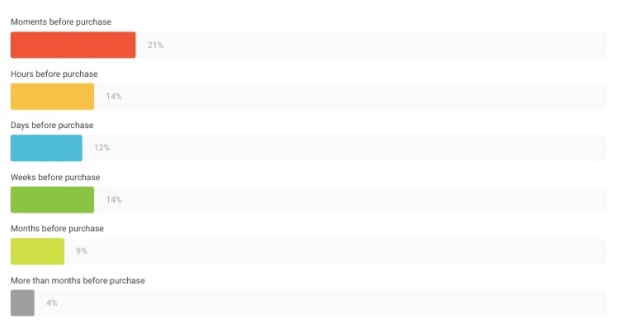
As you can see only 21% start their research moments before a purchase. The rest starts from hours to more than months!
So how many products and prices you think a consumer sees before landing on your website and buying something? Hundreds to thousands.
To emphasize that even further, let’s look at some stats:
- The most important store features driving the purchasing decision (80%) is competitive pricing.
- Around %90 of e-commerce shoppers are masters of hunting deals. Thanks to technology and comparison shopping engines consumers get alerts in multiple items from multiple stores.
- Price comparison engines are a key part of the e-commerce marketing stack, as they constitute around % 20 of e-commerce traffic for all sorts of product categories.
Don’t get scared by these numbers. Here lies a great opportunity for gaining advantage and changing the direction the wind blows.
You see, e-commerce pricing can act as a high-traffic marketing tool and can influence both comparison engines and conversion rates.
We’re taking a holistic approach to pricing strategies, so get ready to learn each and every pricing strategy that might the game-changer you’ve been looking for.
Cost-based pricing
This method requires the company to write down its unit product costs for each of its products in its portfolio, and then set a target profit margin for each of those products. The formula is below:

Some common costs most e-commerce businesses have are:
- Your domain
- Your website hosting
- Your rent (if you have an office space)
- Sourcing products
- Storing your products in a warehouse
- Platform fees
- Shipping
- Returns and refunds
- Bank and processing fees
- Software
- Salaries
- Marketing budget
It may be too obvious but it’s really shocking to see how so many e-commerce companies lose track of their unit costs and fail to even apply this strategy.
Let’s take a look at the second part of the equation, where most of us get greedy, the target profit margin.
The crucial task is coming up with the right profit margin that will maximize the profits without scaring off the customers.
There are 2 risks that come with this approach.
- Pricing too cheap which will undervalue your products
- Pricing too expensive and losing competitiveness
The reason why it carries such gruesome risks is that it ignores two major factors that play an important role in the price/demand relationship:
- Competitor prices
- Consumers’ willingness to pay
For example, when you’re selling a diamond neckless, you know that the buyers don’t care about low prices. So, a fatter profit margin could still hold valid.
However, the same approach would yield zero sales in the consumer electronics industry, where the competition is harsh and the products are identical. There, the profit margins are totally slim, and the players with relatively expensive prices do not have much of a chance in the market.
Rather than pursuing a cost-based approach to pricing, you must make sure that your costs are calculated in every pricing strategy you pursue.
Market-based pricing
If you’re not the single player in the market you definitely need to be aware of your competitors. There are tons of active e-commerce companies in the industry, around 860,000 to be exact. As part of this huge jungle, each company directly competes with at least 15-20 businesses.
That’s why online retailers can’t ignore the market competition. As we mentioned above, consumers care heavily about the price and they compare prices with all the time.
Pursuing a competitive pricing strategy doesn’t mean undercutting your competitors and lowering your prices until your margins are paper-thin. It carries the risk of racing to the bottom which is beneficial to no one.
The major and often neglected benefit of market-oriented pricing with solid competitive pricing intelligence is that it sometimes grants companies exceptional price increase opportunities, where you can increase profits while still holding a competitive edge.
Let’s take a look at this example. Below, there are three retailers selling the same LE CREUSET 27cm Signature Oval Casserole, Marseille Blue.
The first one is the most competitive, selling at £171.08.
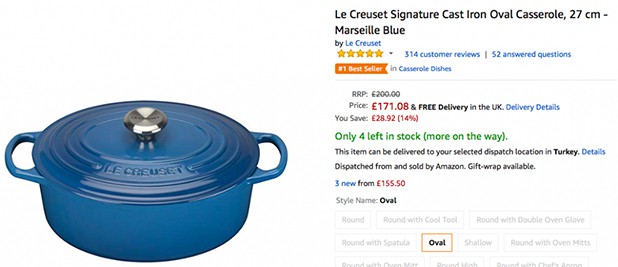
The second and the third ones sell the same item at £210.00.
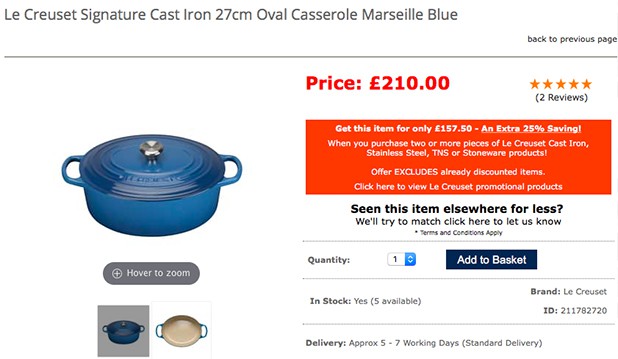
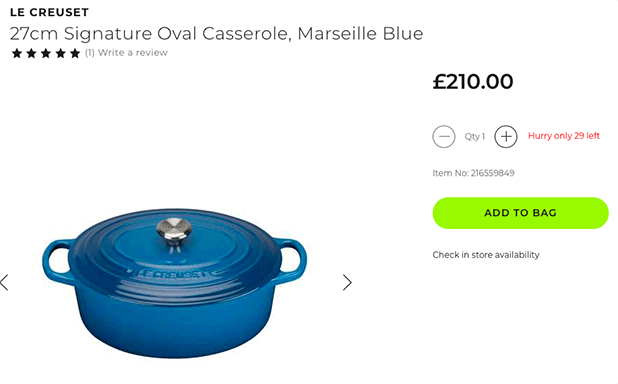
In this scenario, the first retailer could detect that opportunity through a competitor price monitoring software and raise the price just below its competitors. They would increase profit margins and still be the most competitive in the market.
Dynamic pricing
Dynamic pricing is a very profitable e-commerce pricing strategy in which marketers set flexible prices by taking into account costs, targeted profit margins, the demand of the market and your competitors’ prices.
In other words, it allows you to set the optimal prices at the right time in response to real-time demand and competition status while taking into account your business goals.
Market-oriented pricing can be put on auto-pilot with a dynamic pricing engine.
Having tons of data is great. But, the crucial thing is to convert data into actionable insights.
Fortunately, the dynamic pricing and repricing software collects competitor prices and adjusts your prices immediately against any changes. Then, the technology lets you test different price points through repricing rules that help you position your business wherever you want.
If your business strategy is focused on selling in high volumes at cheap prices, then the software does it. You can set rules like:
- My price should be the cheapest in the market
- My price should be 5% higher than the market average
- My price should be $50 lower than my cheapest competitor
The repricing engine works all day and your prices will be changed according to the fluctuations in the market and, of course, based on the rules that you’ve set. As you’re able to react to every single move in the market, your prices will always stay competitive or optimized.
With the mix of competitive intelligence and repricing ability, your business can gain a competitive edge in the market.
Consumer-based pricing
In every aspect of e-commerce, customer-centricity should come before anything else.
When pricing your products, you must be able to answer two questions:
- What value do I bring to my customers?
The answer to both of these questions will actually bring a solid self-awareness for the e-commerce company.
You must segment your audience. Define who’s likely to buy your products, divide them into groups to target each of them with the right products and prices. Use real-time data and purchasing history to accurately identify customer segments.
After you finish segmenting, learn their willingness to pay (WTP) for your products. You can conduct a WTP research yourself, or get help from professionals.
Bundle pricing
Product bundling is fairly simple. You sell a range of products together for a discounted price.
For example, many products require accessories. Some are mandatory (like a lens cap on a camera that usually comes with the camera), but some are highly desired, but optional, like a tripod for a camera.
Bundling products of a similar nature is a great way to increase your average order value because customers are likely to be looking for similar things. Someone buying a DSLR camera is likely to be interested in a different lens or a tripod.
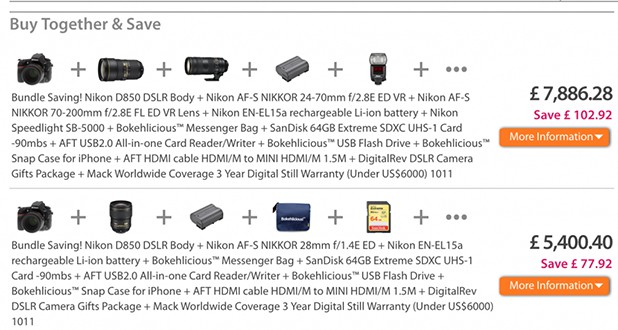
Penetration pricing
Penetration pricing is a marketing strategy where a business enters a new product market with below-average prices.
Businesses also use this strategy when they’re highlighting a new product or service.
It works in a simple way, where they set their prices lower than competitors to lure customers from competitors into their stores.
Price discrimination
Price discrimination is a tailored approach to e-commerce pricing where an identical item is sold at different prices to different buyers. It works on three levels:
- First degree: Consumers are charged the maximum they’d be willing to pay for any given product. For example, auction or bidding sites, where one customer might pay lots more for a similar item, based on what they’re willing to pay.
- Second degree: Consumers can choose their price discrimination. For example, they might be offered a lower price if they buy a product in a higher quantity.
- Third degree: Products are priced differently based on customer segments.
In essence, it involves taking past and real-time customer data, segment customers based on that data and then generate prices specific to each segment.
Loss leader pricing
Loss leader pricing strategy involves setting a few products to be sold at a lower price – a price that actually puts you at a loss – in order to get your customers through the door (or on your website).
Loss leaders hope that once customers are on the website, they’re more likely to buy your other (normally priced items).
An electric toothbrush is a great example of a loss-leader product. This electric toothbrush costs £99.
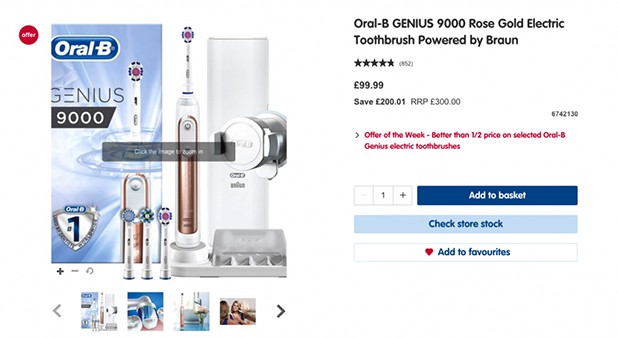
Although we do not know the manufacturing costs, we can assume that they make most of their profits on the replaceable toothbrush heads.
When you think about an electric toothbrush, you don’t tend to buy them often. And so brands can afford to sell them at a loss because they know they’ll easily recoup their lost profit costs form the accessories which need to be changed much more regularly for oral hygiene.
So if you want to implement a loss leader strategy but you are worried, consider whether you have any add-on products where people would need to come back to your store to make a supplementary purchase.
Price skimming
In its simplest terms, e-commerce price skimming is the art of setting high prices for your products during an introductory phase. What this means is that businesses are able to leverage the “newness” of their product and maximize their profits from the get-go.
What you need to remember about price skimming is there are consumers out there who want to be the first ones to get hold of a product. They like the feeling of exclusivity.
If you want to implement price skimming, use phrases such as “exclusive offer” or “limited availability”, “be the first to get your hands on” within your marketing copy to make sure you highlight the urgency of the call.
Apple is one of the best examples of price skimming. During the run-up to a new iPhone release, there are rumors before the announcement even happens.
Once it’s time for the actual announcement there has already been enough excitement drummed up that increases the buyer’s appetite for a purchase.
You have seen the news, where wannabe iPhone owners would camp outside the store to be one the first to get their hands on the newest model. Others would pre-pay for their model weeks before they even get the phone.
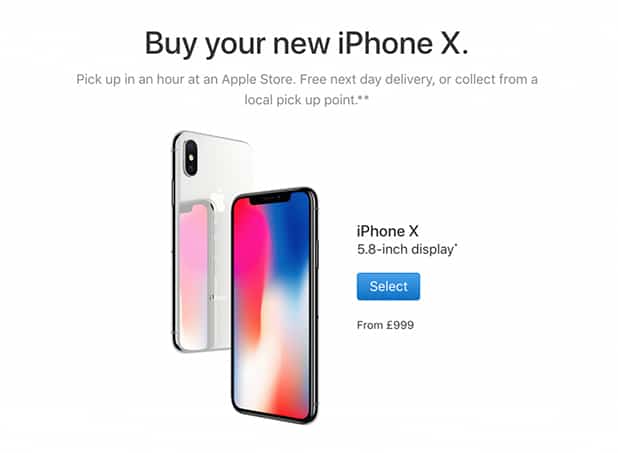
Build your own strategy
Pricing fails when it’s taken as a dull task within an e-commerce company. When taken seriously and handled in smart ways, it turns into a secret and very effective marketing tool.
The approaches that we shared here are not necessarily mutually exclusive. In other words, you don’t have to choose one and forget the others. Contrarily, like most of the marketing and growth strategies, they work best when integrated into a mixed strategy.
Define your business objectives, needs, and interests. Then, decide which of the strategies above would work well with your objectives. Combine them into a unique pricing strategy that’ll correspond to your needs.
Finally, pricing is not a static task, and it requires an ongoing effort to optimize and fine-tune it as your e-commerce company grows. Like any other e-commerce operation that you need to run, there will always be room for improvement and it’s not going to be an easy task. But, fortunately, you have quite enthusiastic folks like us that look forward to helping you out!
Frequently Asked Questions
Based on your business goals, long-term growth plan, and product-specific sales strategy, you can choose from or combine several strategies including Price Skimming, Penetration Pricing, Cost-Plus Pricing, Dynamic Pricing, Basket-Based Pricing, Bundle Pricing etc.
Commonly pursued pricing strategies include Price Skimming, Penetration Pricing, Cost-Plus Pricing, Value-Based Pricing, and Competitive Pricing. Before deciding on one or several, determine which ones fit your business strategy and answers your needs.
You can calculate the price for a product by using the formula below.
Price = (Material Cost + Labor Cost + Overhead Costs) x (1 + Markup)
* Determine the markup yourself.
Although widely used, Cost-Plus Pricing doesn’t fit the e-commerce business environment since it ignores competitor prices.



Love these different pricing strategies! Thanks for sharing wonderful list!
Great job sharing the calculations as well! Thanks